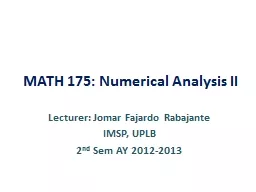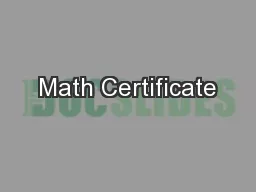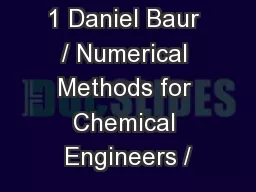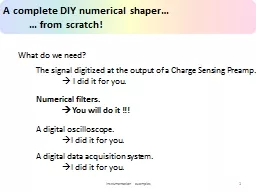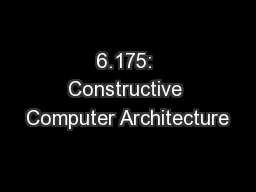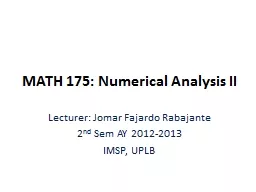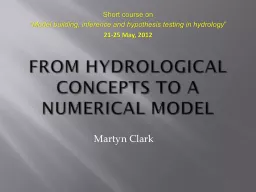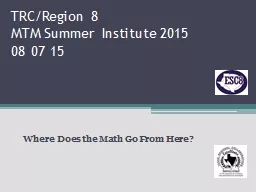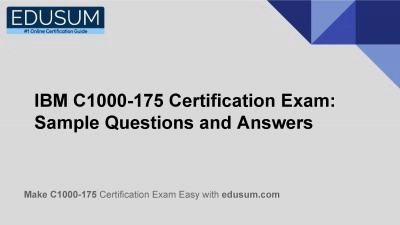PPT-MATH 175: Numerical Analysis II
Author : tawny-fly | Published Date : 2016-06-25
Lecturer Jomar Fajardo Rabajante IMSP UPLB 2 nd Sem AY 20122013 httpwwwyoutubecomwatchvhhT25CO6wDI Theorem Assume that r is a zero of the differentiable function
Presentation Embed Code
Download Presentation
Download Presentation The PPT/PDF document "MATH 175: Numerical Analysis II" is the property of its rightful owner. Permission is granted to download and print the materials on this website for personal, non-commercial use only, and to display it on your personal computer provided you do not modify the materials and that you retain all copyright notices contained in the materials. By downloading content from our website, you accept the terms of this agreement.
MATH 175: Numerical Analysis II: Transcript
Download Rules Of Document
"MATH 175: Numerical Analysis II"The content belongs to its owner. You may download and print it for personal use, without modification, and keep all copyright notices. By downloading, you agree to these terms.
Related Documents

